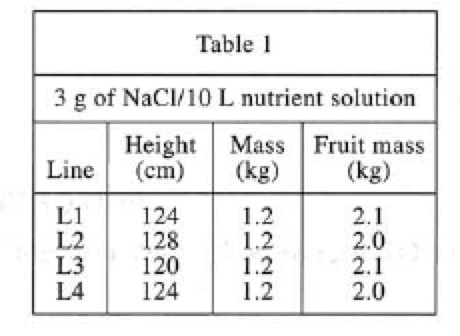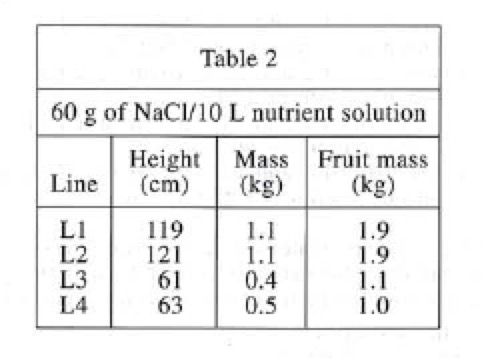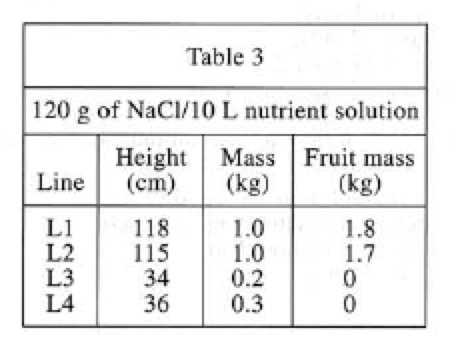Questions 34-40 are based on the following passage.
Tomato plants grow poorly in high-salt environments. This effect is caused by 2 processes:
• A net movement of H₂O between the cytoplasm of the plants' cells and the environment via osmosis
• An increase in the cytoplasmic Na⁺ concentration
The plant Arabidopsis thaliana carries a gene, AtNHXl. The product of this gene, VAC, facilitates uptake of cytoplasmic Na⁺ by the plant's vacuoles.
A researcher created 4 genetically identical lines of tomato plants (L1-L4). AnAtNHXl gene fromArabidopsis thaliana was isolated and 2 identical copies of this gene were incorporated into L1's genome. This process was repeated with L2 and L3 using a different AtNHXl .allele for each line, so that L1, L2, and L3 had different genotypes for AtNHXl. The researcher then did an experiment.
Experiment
Fifty seedlings from each of the 4 lines were grown in 10 L of nutrient solution for 80 days. The 10 L nutrient solution contained H₂O, 12 g of fertilizer, and 3 g of NaCl The nutrient solution was replaced every 5 days. After 80 days, average height, average mass (without fruit), and average fruit mass (per plant) were measured (see Table 1)
This process was repeated except the 10 L nutrient solution contained 60 g of NaCl instead of 3 g of NaCl (see Table 2). 
The process was repeated again except the 10 L nutrient solution contained 120 g of NaCl instead of 3 g of NaCl (see Table 3). 